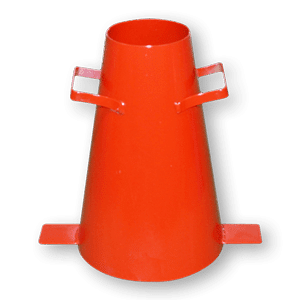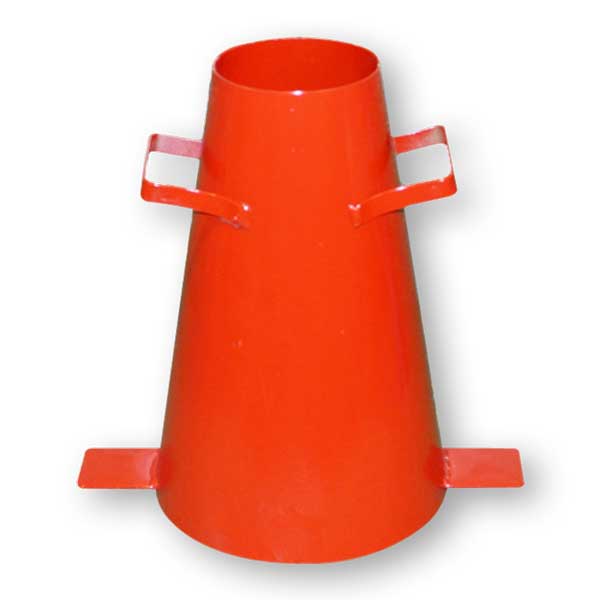SLUMP CONE
For all your soil compaction needs, we’ve got you covered!

READ MORE:
Slump Cone Test Kit:
Concrete slump test or slump cone test is to determine the workability or consistency of concrete mix prepared at the laboratory or the construction site during the progress of the work. Concrete slump test is carried out from batch to batch to check the uniform quality of concrete during construction.
Generally concrete slump value is used to find the workability, which indicates water-cement ratio, but there are various factors including properties of materials, mixing methods, dosage, admixtures etc. also affect the concrete slump value.
Factors which influence the concrete slump test:
- Material properties like chemistry, fineness, particle size distribution, moisture
content and temperature of cementitious materials. Size, texture, combined grading, cleanliness and moisture content of the aggregates, - Chemical admixtures dosage, type, combination, interaction, sequence of addition and its effectiveness,
- Air content of concrete,
- Concrete batching, mixing and transporting methods and equipment,
- Temperature of the concrete,
- Sampling of concrete, slump-testing technique and the condition of test equipment,
- The amount of free water in the concrete, and
- Time since mixing of concrete at the time of testing.
Equipments Required for Concrete Slump Test:
Mold for slump test i.e. slump cone, non porous base plate, measuring scale, temping rod. The mold for the test is in the form of the frustum of a cone having height 30 cm, bottom diameter 20 cm and top diameter 10 cm. The tamping rod is of steel 16 mm diameter and 60cm long and rounded at one end.
Procedure for Concrete Slump Cone Test:
- Clean the internal surface of the mould and apply oil.
- Place the mould on a smooth horizontal non- porous base plate.
- Fill the mould with the prepared concrete mix in 4 approximately equal layers.
- Tamp each layer with 25 strokes of the rounded end of the tamping rod in a uniform manner over the cross section of the mould. For the subsequent layers, the tamping should penetrate into the underlying layer.
- Remove the excess concrete and level the surface with a trowel.
- Clean away the mortar or water leaked out between the mould and the base plate.
- Raise the mould from the concrete immediately and slowly in vertical direction.
- Measure the slump as the difference between the height of the mould and that of height point of the specimen being tested.







